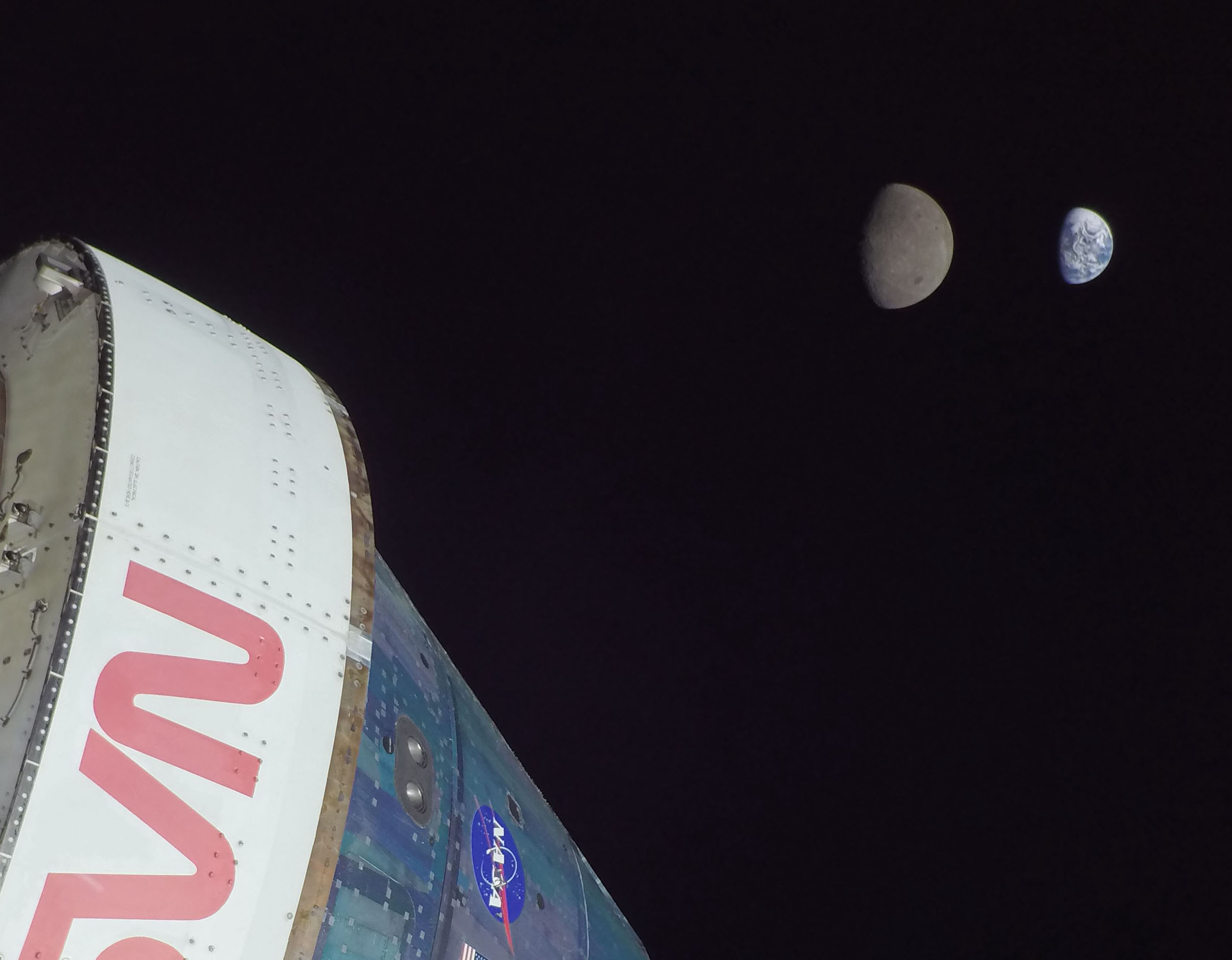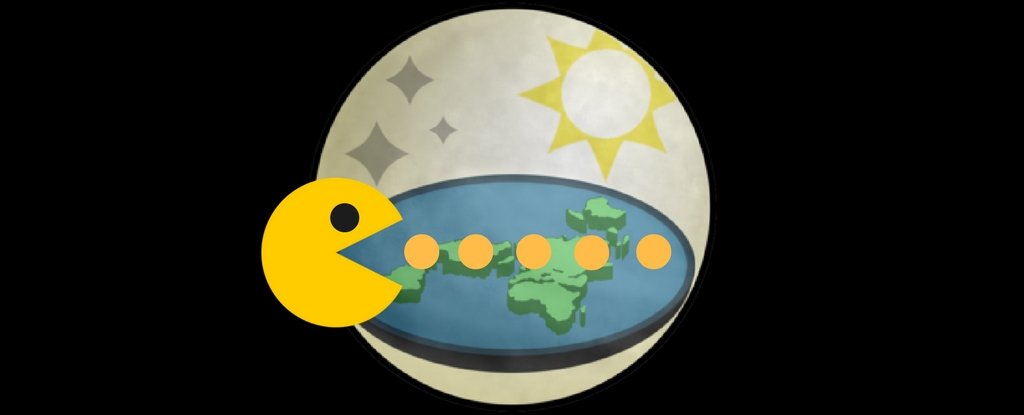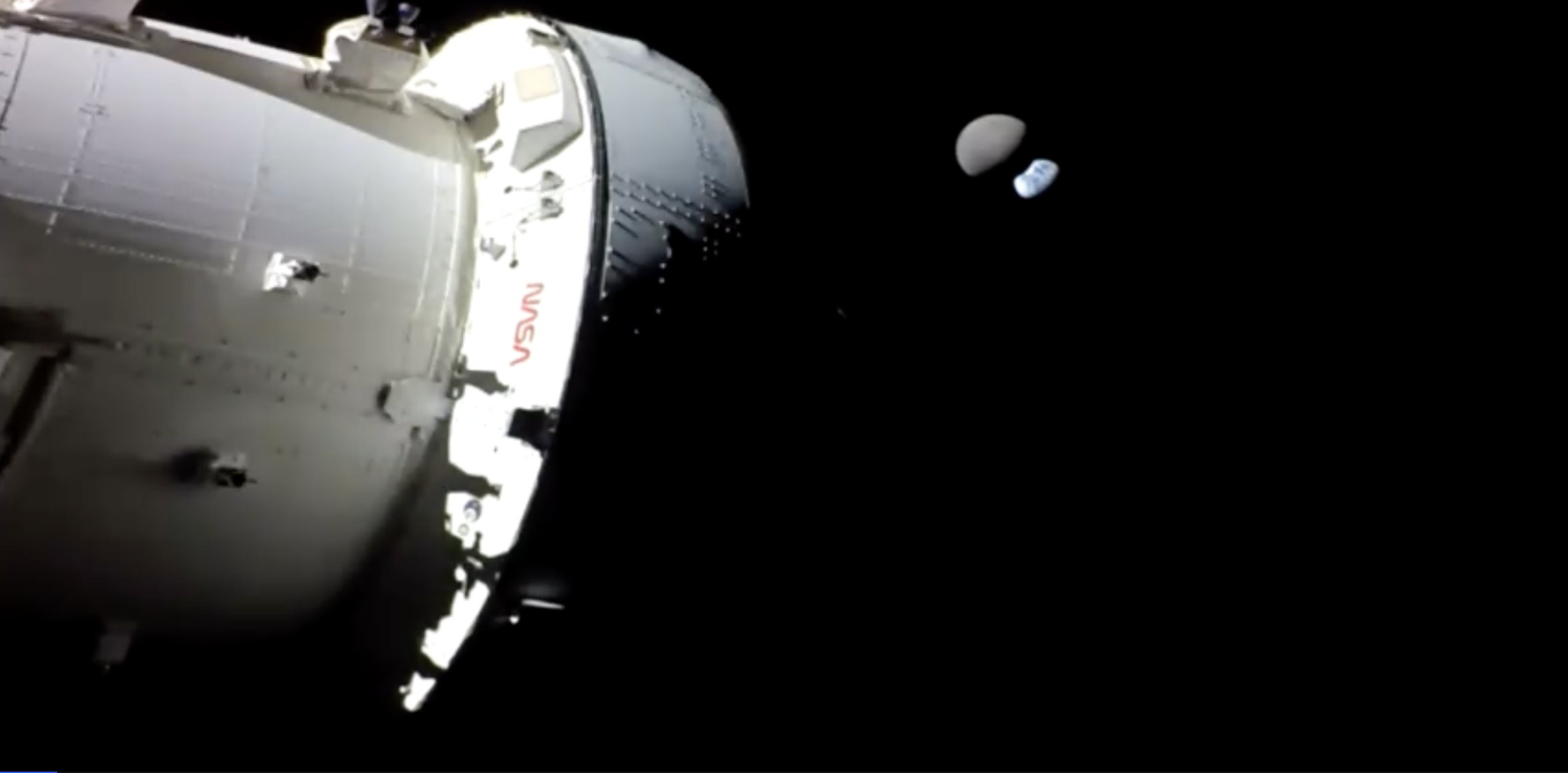You are using an out of date browser. It may not display this or other websites correctly.
You should upgrade or use an alternative browser.
You should upgrade or use an alternative browser.
Artemis Moon Program
- Thread starter fredymac
- Start date
jeffb
ACCESS: Top Secret
- Joined
- 7 October 2012
- Messages
- 1,280
- Reaction score
- 1,937
- Joined
- 21 January 2015
- Messages
- 12,150
- Reaction score
- 16,351
View: https://twitter.com/jimfree/status/1597414303715540992
Do you think @NASA_Orion looks better in pink or blue?
We are testing the lighting options Orion offers with Callisto - a digital voice assistant and video conference technology demonstration payload developed by @LMSpace we're flying on #Artemis I.
- Joined
- 21 January 2015
- Messages
- 12,150
- Reaction score
- 16,351
- Joined
- 21 January 2015
- Messages
- 12,150
- Reaction score
- 16,351
- Joined
- 13 August 2007
- Messages
- 8,446
- Reaction score
- 11,000
High Res of Earth and Moon

the right Sound track to this
View: https://www.youtube.com/watch?v=4SpX8bVEmJo

the right Sound track to this
- Joined
- 21 January 2015
- Messages
- 12,150
- Reaction score
- 16,351
View: https://twitter.com/lmspace/status/1597584605523365889
New @NASA_Orion video clip
We call this one, “A Delicate Balance.”
The @LockheedMartin-built Orion views our terrestrial home and its lunar satellite just before setting a distance record for a spacecraft designed for humans of 270,000 miles away from Earth.
Conspirator
CLEARANCE: L5
- Joined
- 14 January 2021
- Messages
- 324
- Reaction score
- 230
now this.... does put a smile on my face. this will become such an iconic photo for years to come.one best Picture of mission

I like that picture of the Earth and the Moon together Michel Van, it is quite possibly the best photo released so far from the Orion cameras.
glad we were here to see this moment in history
explain this then, flat earthers.
Last edited:
FighterJock
ACCESS: Above Top Secret
- Joined
- 29 October 2007
- Messages
- 5,607
- Reaction score
- 5,934
explain this then, flat earthers.
Well said Conspirator, well said. No doubt they will be rather speechless at present at the current images being shown from Artemis 1.
Rhinocrates
ACCESS: Top Secret
- Joined
- 26 September 2006
- Messages
- 3,053
- Reaction score
- 7,780
Not for long. A conspiracy theorist is someone who predicts that it will rain because of an evil conspiracy, and when it doesn't rain, it's proof that the evil conspiracy is on to them.explain this then, flat earthers.
Well said Conspirator, well said. No doubt they will be rather speechless at present at the current images being shown from Artemis 1.
As for the pictures - clearly they're Hollywood special effects. Stanley Kubrick faked his death and now, his life prolonged by adrenochrome, he's running the entire 'space' programme from Area 51 on behalf of the Totalitarian Hegemony of Earth's Masters (THEM).
Take a flat earther into space? Nope, they'll just say that in space, light bends in a way that makes the earth look round.
I wish I could say that I was joking, but in all seriousness, flat earthers have proposed this:

Flat-Earthers Think You Can't Fall Off The Edge Because We Live in a Pac-Man World
This weekend, over 200 Flat-Earthers from all "around" the world gathered in Britain for the nation's very first Flat Earth Convention.
"One logical possibility for those who are truly free thinkers is that space-time wraps around and we get a Pac-Man effect."
Essentially, Nesbit is arguing that each time you reach the end of the world, you are transported to the opposite end of the map, just like Pac-Man when he falls off the left side of the screen and immediately appears again on the right side.
Bonus: cats won't be able to push everything off the earth after all.
Last edited:
on behalf of the Totalitarian Hegemony of Earth's Masters (THEM).
THEM, LOL
- Joined
- 9 October 2009
- Messages
- 21,973
- Reaction score
- 13,622
A major bonus indeed.Bonus: cats won't be able to push everything off the earth after all.
phantomphan
ACCESS: Confidential
- Joined
- 27 July 2020
- Messages
- 74
- Reaction score
- 170
Unfortunately the dumbest feline is still smarter than the brightest flat-eartherA major bonus indeed.Bonus: cats won't be able to push everything off the earth after all.
- Joined
- 9 October 2009
- Messages
- 21,973
- Reaction score
- 13,622

Artemis 1 moon rocket, NASA's most powerful ever, aced its debut launch, agency says
"The first launch of the Space Launch System rocket was simply eye-watering."
- Joined
- 9 October 2009
- Messages
- 21,973
- Reaction score
- 13,622

Building on the moon: NASA awards Texas company $57 million for lunar construction system
Project Olympus just got a significant cash infusion.
- Joined
- 21 January 2015
- Messages
- 12,150
- Reaction score
- 16,351
View: https://twitter.com/jimfree/status/1598402407704190976
View: https://youtu.be/fhaWaGZJaCw
View: https://twitter.com/nasakennedy/status/1598413595762520064We are GO to depart distant retrograde orbit. Today at 4:53 PM ET, @NASA_Orion will perform a burn to depart DRO and begin its journey back to Earth. We're covering the burn live at nasa.gov/live - Tune in starting at 4:30 PM ET.
I Spy, but make it space fan edition: Inside of the @NASA_Orion spacecraft in 360 degrees
Before #Artemis I launched to the Moon, we captured content inside of Orion's crew module as an interactive 360 video. What payloads do you spy?
- Joined
- 21 January 2015
- Messages
- 12,150
- Reaction score
- 16,351
- Joined
- 21 January 2015
- Messages
- 12,150
- Reaction score
- 16,351
View: https://twitter.com/jeff_foust/status/1598436221230907393
View: https://twitter.com/jeff_foust/status/1598436709674504199Orion has completed a “nominal” distant retrograde orbit departure burn, NASA says.
The sets up a second maneuver, the return powered flyby, on Dec. 5 as Orion flies by the Moon, and splashdown on Dec. 11.
- Joined
- 21 January 2015
- Messages
- 12,150
- Reaction score
- 16,351
View: https://twitter.com/nasaspaceflight/status/1598436422335320066
Burn complete. Peek-a-boo with our planet!
- Joined
- 21 January 2015
- Messages
- 12,150
- Reaction score
- 16,351
View: https://twitter.com/planet4589/status/1598436421701980166
View: https://twitter.com/planet4589/status/1598436846995906562
The Artemis I Orion has completed its DRO departure burn, begun at 2153 UTC. The Orion is at apolune at about 86300 km from the Moon; it will now fall back to a close 136 km flyby at 1635 UTC Dec 5, where it will make the transearth injection burn.
View: https://twitter.com/planet4589/status/1598436846995906562
Orion is still in (loosely bound) lunar orbit; parameters about 130 x 108000 km. The burn at perilune will boost it to a lunar escape trajectory
- Joined
- 21 January 2015
- Messages
- 12,150
- Reaction score
- 16,351
View: https://twitter.com/stim3on/status/1597662466866937859
View: https://youtu.be/NaDGov8xCBs
Remember the awesome images taken by the optical navigation camera onboard the @NASA_Orion spacecraft? They had just enough overlap to create this 3D model of the lunar surface using photogrammetry.
- Joined
- 21 January 2015
- Messages
- 12,150
- Reaction score
- 16,351
- Joined
- 21 January 2015
- Messages
- 12,150
- Reaction score
- 16,351
View: https://twitter.com/jimfree/status/1599223159156342784
Today, we tested changing the minimum jet firing time for the reaction control thrusters on the @ESA-built European Service Module to model jet thruster firings that we'll use on #Artemis II. Read more about today's @NASA_Orion activities at
Artemis I Flight Day 18 – Orion Re-enters Lunar Sphere of Influence
On Flight Day 18, engineers also performed a development flight test objective that changed the minimum jet firing time for the reaction control thrusters over a period of 24 hours. This test objective is designed to exercise the reaction control system jets in a pre-planned sequence to model jet thruster firings that will be incorporated into the crewed Artemis II mission.
The test used the reaction control system (RCS) thrusters, built by ArianeGroup, on the European Service Module. All firings of RCS thrusters during the flight test to date have used those on the service module. Another set of 12 RCS thrusters, built by Aerojet Rocketdyne, are located on the crew module.
While the crew module thrusters will be tested a few days before Orion’s splashdown on Earth, their primary role takes place in the final hour before splashdown in the Pacific Ocean. After the crew module and service module separate the crew module’s RCS thrusters will be used to ensure the spacecraft is properly oriented for re-entry, with its heat shield pointed forward, and stable during descent under parachutes.
Orion will be out of communication with NASA’s Deep Space Network for about 4.5 hours from 7:40 p.m. CST to 12:00 a.m. while network teams reconfigure ground stations. The flight control team has adjusted the activity timeline, and there is no impact to the mission’s trajectory. Automated commands will guide the spacecraft during this period, and Orion will reacquire signal as it passes within range of the Canberra ground station.
Just after 4:30 p.m. CST on Dec. 3, Orion was traveling 221,630 miles from Earth and 40,086 miles from the Moon, cruising at 2,777 miles per hour.
Images from the mission are available on NASA’s Johnson Space Center Flickr account and Image and Video Library. When bandwidth allows, live views from Orion are available in real-time.
Author Shaneequa Vereen
Posted on December 3, 2022 7:18 pm
Categories Artemis I, NASA, Orion SpacecraftTags Artemis I
- Joined
- 21 January 2015
- Messages
- 12,150
- Reaction score
- 16,351
View: https://twitter.com/esaspaceflight/status/1599369313843957760
Hot video of the European Service Module's Reaction Control System in action, fine-tuning @NASA_Orion's return to Earth #Artemis flight day 17.
Made in Germany by @ArianeGroup these thrusters are keeping the Orion spacecraft on track and on course https://blogs.esa.int/orion/2022/12/03/artemis-i-flight-day-17-downloading-data/
- Joined
- 21 January 2015
- Messages
- 12,150
- Reaction score
- 16,351
Orion Spacecraft – Artemis
Shortly after acquiring signal with the Deep Space Network’s Canberra ground station at 12:41 a.m. CST, Orion experienced an issue with a power conditioning distribution unit (PCDU), in which four of the latching current limiters responsible for downstream power were switched off. These lower-level switches connect to the propulsion and heater subsystems. Teams confirmed the system was healthy and successfully repowered the downstream components. There was no interruption of power to any critical systems, and there were no adverse effects to Orion’s navigation or communication systems.
Might the discarded service module have some utility?
No, it will be destroyed within seconds of reentry aided by the presence of any left over propellants onboard.
- Joined
- 21 January 2015
- Messages
- 12,150
- Reaction score
- 16,351
Artemis II – European Service Module perspective
European Space Agency, ESA
5 Dec 2022
After the uncrewed Artemis I test flight, the Artemis II mission will have astronauts demonstrate what the Orion spacecraft – powered by a European Service Module – can do on its voyage around the Moon.
Two astronauts will fly on the second Artemis mission and take over controls to show how Orion handles at close-quarter flying. While in Earth orbit the spacecraft will detach from its second stage, fly away, turn around, approach the second stage and then fly away again – all using the European Service Module’s 33 thrusters.
Whereas in the first Artemis mission the second stage fired Orion into its lunar orbit, for the second mission it will be the European Service Module that will give the spacecraft its final push to its voyage around the Moon.
The crew will fly Orion to 8889 km beyond the Moon before completing a lunar flyby and returning to Earth. The mission will take a minimum of eight days and will collect valuable flight test data.
The European Service Module is one of ESA’s many contributions to NASA’s Orion spacecraft and the Artemis programme that will send astronauts to the Moon and beyond. It provides electricity, water, oxygen and nitrogen as well as keeping the spacecraft at the right temperature and on course.
The European Service Module has 33 thrusters, 11 km of electrical wiring, four propellant and two pressure tanks that all work together to supply propulsion and everything needed to keep astronauts alive far from Earth – there is no room for error.
- Joined
- 21 January 2015
- Messages
- 12,150
- Reaction score
- 16,351
View: https://twitter.com/nasaspaceflight/status/1599814745191723008
View: https://twitter.com/nasa_orion/status/1599814673506963457Amazing view as Orion comes out of LOS. Burn was as expected.
We've completed our return powered flyby burn and are heading home!
FighterJock
ACCESS: Above Top Secret
- Joined
- 29 October 2007
- Messages
- 5,607
- Reaction score
- 5,934
View: https://twitter.com/nasaspaceflight/status/1599814745191723008
View: https://twitter.com/nasa_orion/status/1599814673506963457Amazing view as Orion comes out of LOS. Burn was as expected.
We've completed our return powered flyby burn and are heading home!
That is excellent news, it will be interesting to see what happens during Orion's re-entry through the Earth's atmosphere. For me that is going to be the most fascinating part of the entire Artemis 1 mission.
Similar threads
-
-
NASA wants fresh ideas for recycling garbage on the moon
- Started by southwestforests
- Replies: 1
-
Lockheed Martin proposes a mega-lunar lander: 62 tons and an elevator
- Started by Flyaway
- Replies: 8
-
-

